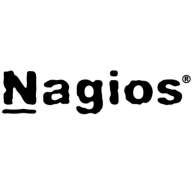

Opsview and Nagios Core are competitors in the network monitoring category. Opsview seems to have an upper hand due to its comprehensive features and support, while Nagios Core offers significant flexibility and cost-effectiveness.
Features: Opsview has extensive monitoring capabilities, ease of integration with various systems, and detailed reporting, providing built-in functionalities. Nagios Core offers a customizable, open-source solution with basic monitoring and numerous community-driven plugins, relying on community-contributed add-ons for personalization.
Room for Improvement: Opsview could benefit from more competitive pricing, enhanced user interface, and reduced complexity in customization. Nagios Core could improve by offering more built-in functionalities, official support enhancements, and easing the manual configuration process required for initial setup.
Ease of Deployment and Customer Service: Opsview features a straightforward deployment with robust support services, including pre-configured templates and dedicated help. Nagios Core involves more manual configuration with limited official support, primarily relying on community forums for assistance.
Pricing and ROI: Opsview has a higher initial setup cost offering potentially higher ROI due to advanced features and support. Nagios Core is free to use, minimizing startup costs with its open-source nature permitting cost-effective customization, though it may incur additional costs for business-specific plugin configurations.


This is IT infrastructure monitoring's industry-standard, open-source core. Free without professional support services.
Opsview is a modern and scalable SaaS or on-premise monitoring solution that gives your organization full visibility into on-premises and cloud IT infrastructure. It delivers simplified management and a single pane of glass view of your entire IT operations. The solution provides unified insight into dynamic IT operations on premises, in the cloud, or hybrid. Additionally, it can be used either in agent-based or agentless configurations.
You can use Opsview to monitor:
Operating systems
Networks
Cloud
VMs
Containers
Databases
Applications
Opsview Features
Opsview comes with an array of features, including:
AutoMonitor express scan: This feature makes it easy for you to keep up with your
changing IT infrastructure by helping you find new Windows, VMware, and Azure hosts.
Business service monitoring: This enables you to see the health of all your end-to-end
business services in real time and in one place.
Autodiscovery: With this feature you can automatically discover and profile hosts in your environment, which helps you quickly populate information into Opsview for monitoring.
Network analyzer: Opsview provides you with a complete picture of your company's
network infrastructure via its Network Topology, Flow Collector, & NetAudit modules.
Customizable dashboards: Opsview dashboards give you a view of all your monitoring
metrics in interactive dashboards that are easy to create and maintain.
Customizable reports: With Opsview, reports connect to the Opsview Data Warehouse and present historical data collected by Opsview. The solution’s out-of-the-box reports include performance, SLA, and events.
Disaster recovery: Opsview gives your organization peace of mind with its disaster
recovery by restoring your Opsview system if needed.
Event handlers: Opsview event handlers allow for automation and proactive monitoring so that your users are not impacted.
Events viewer: The events viewer feature helps you easily see all the important events in your Opsview system.
High availability server: Opsview has a high availability monitor that offers protection to ensure that you never lose IT infrastructure visibility.
Multitenancy: Multitenancy makes it possible for your MSP to give control of Opsview to your end users. It also allows you to create new hosts and roles as well as users while using a secure, private environment.
Log analytics: This feature allows you to improve logging visibility, reporting, correlation, and alerting.
SNMP traps: With SNMP traps, you can reduce your network and server load and provide faster service to your customers.
Opsview Benefits
There are many benefits to implementing Opsview. Some of the biggest advantages the
solution offers include:
Extensible: Opsview can be used in agent-based or agentless configurations. In addition, it can sit above multiple monitoring tools, aggregating information into a single pane of glass.
Scalable: Opsview is very scalable. It can easily scale beyond 10,000 monitored devices via its distributed model that spreads monitoring across many monitoring engines. Its databases may be located on dedicated servers to further distribute load.
Functional overview: Opsview monitors your IT infrastructure, network and applications, and displays alerts. It is also designed to generate notifications and integrate with your other service management tools.
Flexible: Opsview has a flexible web framework, allowing dashboards and monitoring views to be easily customized and extended.
Integration: Easily integrate Opsview Cloud with your current operational tools, including help desks, service management, automation and notification tools
Automation: Automate the configuration and operation of your IT monitoring system using Opsview’s intrinsic automation capabilities. Allowing you to spend more time on projects that drive your business.
Opsview Cloud
Opsview Cloud gives your business 24/7 Saas Monitoring for your entire IT estate. Benefits include:
Reducing your infrastructure costs
Realigning your resources to focus on business value IT projects
Ensuring you have 24/7 monitoring
Utilizing Opsview experts to provide monitoring best practices/tips and tricks
We monitor all Network Monitoring Software reviews to prevent fraudulent reviews and keep review quality high. We do not post reviews by company employees or direct competitors. We validate each review for authenticity via cross-reference with LinkedIn, and personal follow-up with the reviewer when necessary.